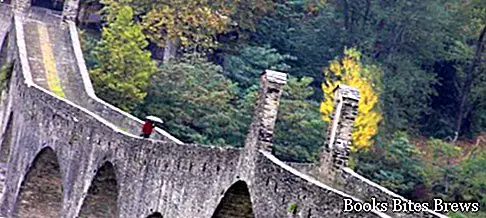What to see in Bobbio, itinerary of the main monuments and places of interest in the village of San Colombano, including the Benedictine monastery, the Abbey Museum, the Devil's Bridge and the Malaspina Castle.
Tourist information
Located in the province of Piacenza in Valtrebbia, Bobbio derives its name from the stream on whose banks the first nucleus of the Roman village rose in the fourth century.
The first human settlements in the area date back to remote times, as evidenced by various archaeological finds dating back to the Neolithic and Bronze Age, tribes of Ligurian origin settled throughout the Val Trebbia, to which later populations from Gaul were added.
In 614 the Colombian monk arrived in Bobbio, from Ireland, who had received that territory as a gift from the Lombard king Agilulf.
It was an ideal strategic area to control the important salt road, which connected Piacenza with Genoa.
Colombano decided to restore a small local church dedicated to San Pietro and, who died on 23 November 615, was buried by his disciples inside the place of worship to which he had become so fond.
The village developed around this church, which rapidly increased its number of inhabitants with the construction of new houses.
What see
Bobbio became a very important religious pilgrimage center, compared by many to the Abbey of Montecassino, with schools and a library, as well as a Scriptorium, a place intended for copying numerous illuminated manuscripts recalling Irish culture.
The Benedictine monastic complex, which was rebuilt in the fifteenth century, still preserves the bell tower of the ninth century.
The three-nave interior contains beautiful decorations by Bernardino Lanzani, while the sarcophagus of San Colombano is located in the crypt.
The remains of a 12th century mosaic floor are still visible, as well as two 9th century marble barriers and a 12th century wrought iron gate.
Recommended readings- Brisighella (Emilia Romagna): what to see
- Grazzano Visconti (Emilia Romagna): what to see
- Castelnovo ne ’Monti (Emilia Romagna): what to see
- Canossa (Emilia Romagna): what to see
- Emilia Romagna: Sunday day trips
The Museum of the Abbey deserves to be visited, which is accessed through the portico of the basilica, which inside preserves archaeological finds from the Roman and Lombard periods, as well as an ivory display case from the fourth century and paintings from the Lombard school.
One of the symbols of the town of Bobbio is the Ponte Vecchio also known as the "Devil's Bridge" or "Hunchback".
The Ponte Vecchio, one of the city symbols and also known as the Devil's Bridge, probably dates back to before the arrival of Colombano, but its existence is documented only from 1196 onwards.
The nickname "Ponte del Diavolo" derives from a popular legend, which tells the story of the pact with the devil made by San Colombano.
With this agreement, the devil undertook to build the bridge in one night if in exchange he had the soul of the first living being who would cross it.
The following morning, noting that the bridge had been completed, even if with irregular shape and arches, San Colombano kept faith with the word given, however, making it cross first by a dog rather than by a human being.
Another monument to visit in Bobbio is the Malaspina castle which, dating back to 1304 and built at the behest of Corradino Malaspina, was at first the residence of the Podestà, then later became a fiefdom of the Lords Dal Verme.
Only the central keep remains of the original castle, from which it is possible to enjoy a splendid panorama, including the city and the surrounding mountains.




